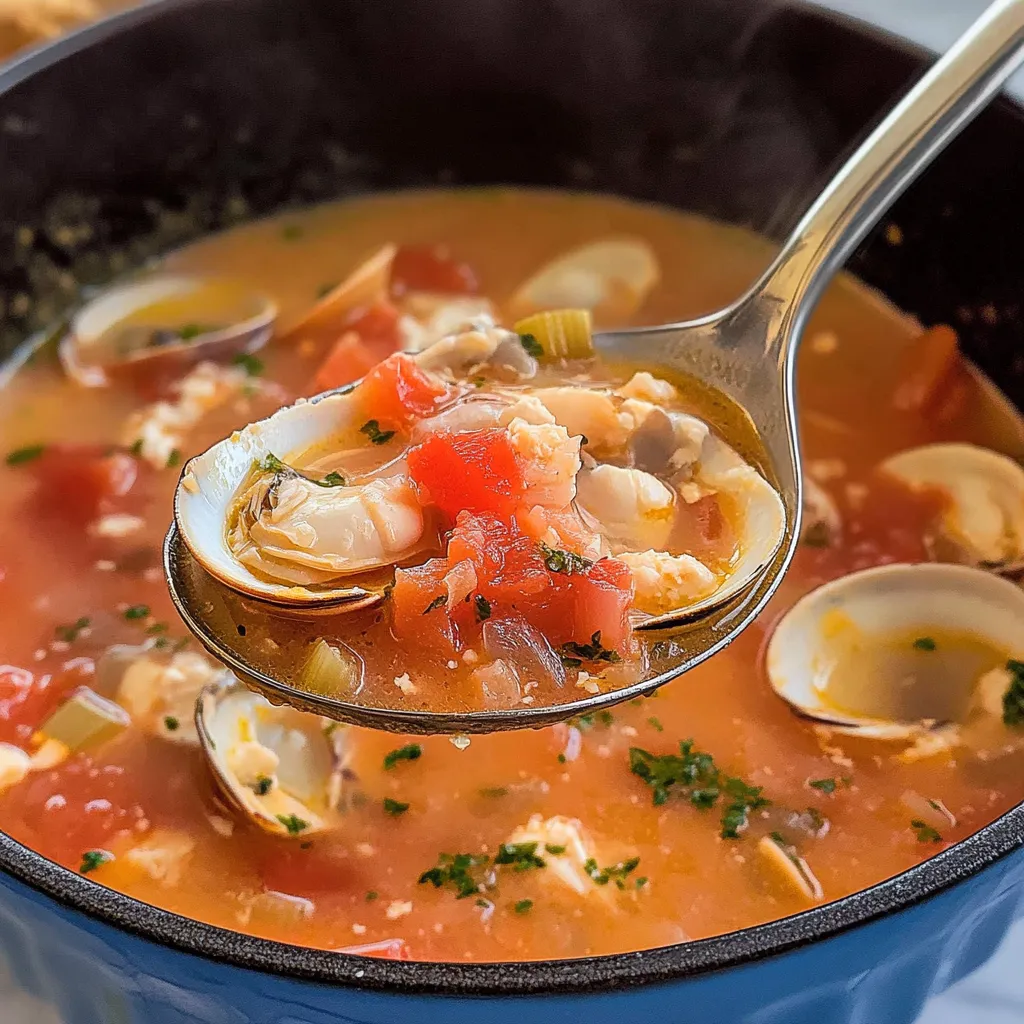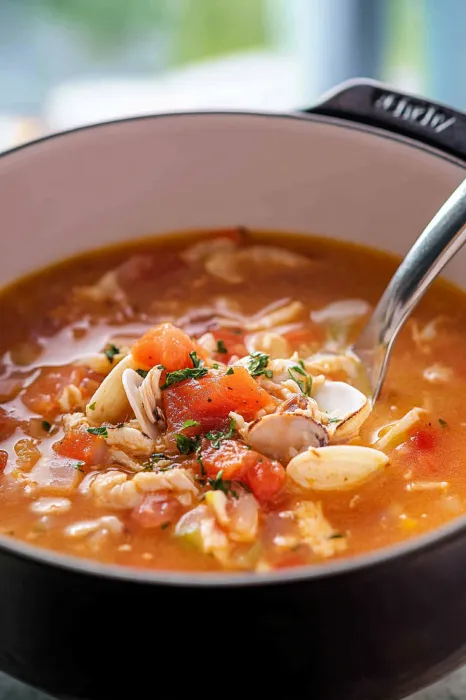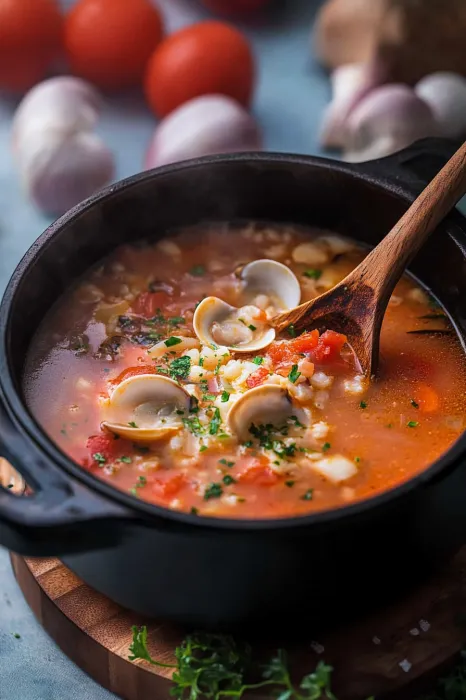 Pin it
Pin it
This tomato-based Manhattan clam chowder turns basic pantry stuff into a filling, tasty dish that's become my fave comfort food when it's cold outside. It's different from the creamy New England type, giving you a lighter but just as satisfying bowl.
I found this dish during a beach trip where I first tried Manhattan-style chowder. After trying many times to match that unforgettable restaurant bowl, this version finally hit the sweet spot between briny clams and zesty tomatoes.
Ingredients
- Bacon (chopped): Gives a smoky base and full-bodied richness that makes the whole soup better
- Yellow onion (chopped): Brings sweet aromas when it cooks down with the bacon
- Baby clams (undrained): The main player that adds sea flavor; keep the juice for more taste
- White potatoes (unpeeled): Makes the soup filling and naturally thickens the broth a bit
- Fresh thyme: Adds woody herb flavors that work great with seafood
- Diced tomatoes (undrained): Creates the classic Manhattan red color and tangy taste
Step-by-Step Instructions
- Create Your Base:
- Fry bacon and onion at medium heat until bacon gets crunchy and onions turn see-through with a slight golden color. This first step makes all the flavors come alive; about 8 minutes. The bacon fat will make everything taste slightly smoky.
- Mix In Key Items:
- Add clams with their liquid, potatoes, and water, then let it come to a slow boil. This mix forms the main taste of your chowder. Lower heat, put the lid on, and cook for around 20 minutes until you can easily stick a fork in the potatoes without them falling apart.
- Complete and Enjoy:
- When potatoes are soft, throw in the rest - tomatoes, thyme, salt, and pepper. Get it boiling again while giving it a stir now and then to mix the flavors. You'll see a bright red soup with bits of potato, bacon, and clams throughout. Serve it right away while it's still hot.
 Pin it
Pin it
My own little trick with this chowder is buying the best canned tomatoes I can find. The jump from regular to fancy tomatoes changes this soup from just OK to amazing. My grandma always used tomatoes she put up herself which made the chowder taste incredibly rich.
The History Behind the Chowder
Manhattan clam chowder showed up in the early 1900s when Italian folks who moved to New York started adding tomatoes to old clam soup recipes. The dish got so popular it started a friendly fight with New England chowder fans. Some traditionalists thought putting tomatoes in chowder was so wrong that Maine lawmakers tried to pass a bill in 1939 that would've made adding tomatoes to chowder against the law!
Storage and Reheating
This chowder keeps well in your fridge for up to three days if you put it in a sealed container. The taste actually gets better overnight as everything mingles together. When you want to heat it up again, warm it slowly on the stove over medium-low, stirring every so often. You might need to add a bit of water to get it back to how runny it was before. If you want to keep it longer, you can freeze portions in sealed containers for up to two months.
Perfect Pairings
Enjoy this bright chowder with a chunk of crusty sourdough for dipping or toss some oyster crackers on top for a nice crunch. For a full meal, add a basic green salad with lemon dressing. The tangy flavors in both the chowder and salad work really well together. Sometimes for special dinners, I serve small cups of this chowder to start before a main seafood dish, making a themed meal.
 Pin it
Pin it
Frequently Asked Questions
- → Could fresh clams replace canned ones?
Absolutely! Steam fresh clams first and save their juice for your broth.
- → Which potatoes are best for this dish?
Yukon Gold or white potatoes are great—they stay firm and don't fall apart while simmering.
- → Is this soup good for prepping ahead?
Yep, it tastes even better the next day! Store it in the fridge in a sealed container and warm it up nicely before eating.
- → What can I use instead of bacon?
Try pancetta, turkey bacon, or skip it for a vegetarian spin (just swap in veggie broth).
- → Is it okay to freeze this soup?
Definitely! Let it cool off first, then pop it into a freezer-safe container. It'll last up to three months.
